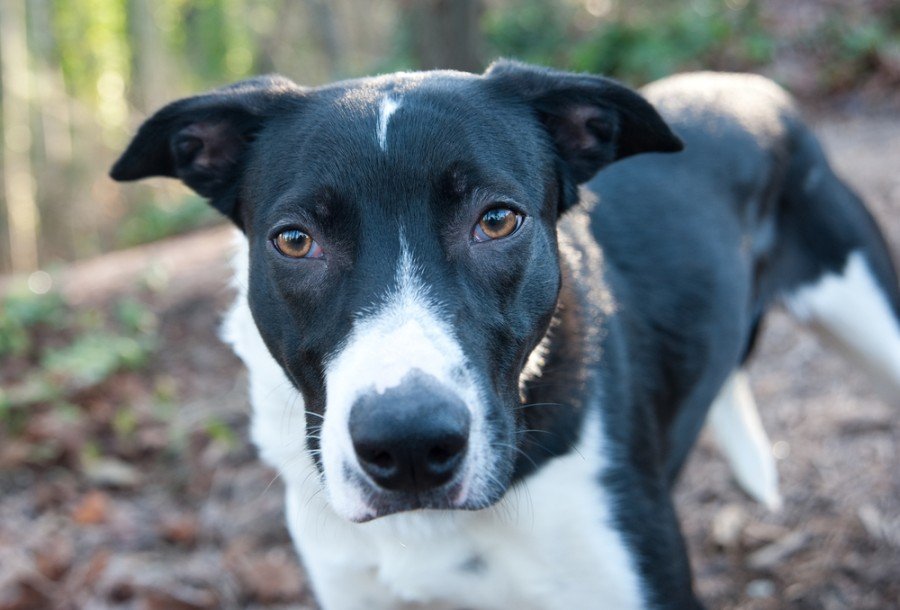Dorgi (Dachshund & Pembroke Welsh Corgi Mix): Info, Pictures, Characteristics & Facts

Updated on

Height:
5-12 inches
Weight:
11-33 pounds
Lifespan:
12-16 years
Colors:
Black, tan, fawn, chocolate, blue, cream, red, sable, and more
Suitable for:
Families looking for a small yet energetic dog
Temperament:
Fun-loving and affectionate, playful but slightly stubborn, intelligent and independent
If you’ve been dreaming of a little dog breed with a big personality, then prepare to be charmed by the Dorgi. These characterful pups are the result of crossing a Dachshund and a Corgi, and they combine all the best aspects of these sweet and small breeds.
There’s no denying that these cute little pups are irresistible, but they might be more of a challenge than you might think. While their small size and short legs might fool you into thinking these pups will be happy to lay on the sofa, they’re incredibly energetic.
These little guys are a relatively new kid on the block when it comes to hybrid breeds, so you might not know as much about them as some of the more popular mixes out there. We plan on changing all that! Our guide will tell you everything you need to know about these fantastic little dogs, including whether they’ll fit into your family.
Dorgi Puppies
It’s almost impossible to visit a litter of tiny Dorgi pups without immediately wanting to pick one to take home! Before you take that plunge into dog ownership, though, it’s important to think about whether you can genuinely offer what a particular breed requires to stay healthy and happy.
Dorgis are extremely cute, but they have a stubborn streak that can make training a bit of a challenge. If you’re a first-time dog owner, this willful nature can be difficult to overcome.
For a small breed, they also need more exercise than you might expect. If they don’t get the chance to regularly burn off some steam, these little dogs will make their own fun. Just bear in mind that it might be at the expense of your furniture or favorite pair of shoes!
3 Little-Known Facts About the Dorgi
1. Corgis come in two varieties.
There are two types of Corgi that are officially accepted by the American Kennel Club: the Pembroke Welsh Corgi and the Cardigan Welsh Corgi. The main differences are that the Cardigan has more rounded ears and a longer tail, while the Pembroke’s ears are more distinctly pointed. Pembroke Corgis are far more popular in the U.S.A., so this will likely be the variety used when breeding Dorgis.
2. Queen Elizabeth II was a Corgi and a Dorgi fan.
Perhaps the most famous fan of the Corgi and Dorgi breeds was the Queen of the United Kingdom, Elizabeth II. Her first Pembroke Welsh Corgi was named Dookie, back in 1933! As well as plenty of Corgis, the Queen has also owned several Dorgis, named Vulcan, Candy, Berry, and Cider.
3. Both Corgis and Dachshunds are working breeds.
They might be small, but both these breeds are mighty! Corgis were originally bred to herd sheep and cattle. They were brought over from Central Europe to Wales, where the breed was refined into the Corgi we know and love today.
Dachshund means “badger dog” in German, which tells us exactly what this little breed was originally bred to do. Their small size made them perfect for burrowing into badger setts while their deep and loud bark helped their handler locate where they were underground. The winner of a fight between a Dachshund and a badger might seem easy to predict, but these little dogs have a brave and ferocious streak, which means they could take on animals much bigger than them and still win.
These working roots give us a clue that like their parent breeds, Dorgis are full of energy for long days on the farm. They’re also smart and independent, happy to solve problems by themselves rather than wait for instructions. Sometimes this can be a good thing, but it certainly makes training more of a challenge!

Temperament & Intelligence of the Dorgi 🧠
Dorgis are super smart and used to thinking for themselves. You might find that your Dorgi sometimes seems just as clever as humans. They can also be stubborn, which can manifest itself by a simple refusal to follow instructions. If your Dorgi can’t see the point of what they’re being asked to do, they may simply decide not to do it.
They do love to spend time around their humans, though, and don’t enjoy being left alone for a long time. They will enjoy the opportunity to hang out in the backyard, go for plenty of walks, and spend time with their humans of all ages.
Are These Dogs Good for Families? 🏡
Dorgis are an excellent choice for an active family who enjoys spending time outdoors. They get along well with younger children, as long as both dogs and children are trained on how to play together respectfully!
Their small size means you don’t need a huge backyard, and they’re not likely to knock over old or young relatives either. After a good play session to get rid of energy, Dorgis will love nothing more than curling up with their humans to relax.
Does This Breed Get Along With Other Pets? 🐶 😽
As a general rule, Dorgis do get along with other pets as long as you take care to introduce them slowly and monitor the initial introductions carefully.
Dachshunds do have a high prey drive when it comes to smaller animals, so you’ll need to take care to see whether this is something that your Dorgi pup inherits. The younger that your Dorgi is introduced to pets like cats and rodents, the better the chance of them all getting along. Cats who stand their ground with Dorgis will usually be accepted more quickly than a cat who turns tail and runs. Some Dorgis can’t resist the urge to chase!
Given that Corgis were bred to herd cattle, some Dorgis also have this instinct. If you live on a farm or keep horses, you might find that your Dorgi can’t resist the urge to round them up! The Corgi’s method of herding is to nip at the heels of whatever they’re trying to round up, so this is another behavior to watch out for. With proper training, both of these issues can be easily controlled, especially if you start when your Dorgi is still a pup.

Things to Know When Owning a Dorgi
Becoming the proud owner of a Dorgi will take plenty of money and time. So, before you make your final decision, here’s more information to help you make up your mind.
Food & Diet Requirements 🦴
Dorgis are active little dogs, so you’ll want to make sure you provide them with high-quality dog food with a good amount of protein included. Whether you choose to feed wet food, dry kibble, or a mixture of both will be up to you. It’s a good idea to try a few different combinations, and your dog may indicate a clear preference for one or the other.
While these are active pups, they also love to eat. So, that means free feeding is a definite no-no. Keep the portion size controlled, and don’t allow anyone to feed them fatty table scraps. If you use food rewards in your training, then remember to account for this when measuring out your dog’s rations. The long back of the Dorgi can be put under additional strain if you allow your dog to become overweight, and this can lead to health problems.
Exercise 🐕
Their short legs and small size might make you think that Dorgis don’t need much exercise, but they’re actually an active breed and will need at least an hour of exercise every day. This can be split into walks, games of fetch, and training sessions.
Free time in the backyard will always be welcome, but don’t use that as a substitute for a good walk. On-leash walks are recommended because if these pups spy something interesting, they can forget all their recall skills.
Due to their long backs, you shouldn’t ask your Dorgi to jump down from heights, including off of furniture. The same goes for going up and down the stairs too often. These kinds of activities can lead to excessive strain on their spines, which can lead to health problems in the future.

Training 🦮
These clever little dogs excel at training sessions and can turn their paws to plenty of activities, including obedience and agility. While their cleverness means they pick up new commands and tricks quickly, they can also show their stubborn and willful side at times.
Starting puppy training classes as soon as possible is the best way to find out how to deal with this stubborn streak. Dorgis respond well to positive reinforcement techniques, as well as short sessions that always end on a good note.
Combining physical and mental exercise is the best way to keep your Dorgi content, so using food puzzles, agility courses, or challenging games of fetch will keep your Dorgi’s body and mind well exercised.
Grooming ✂️
The Dorgi’s coat is usually of short to medium length, with a wiry texture. Their coats are dense but don’t shed that much, so a weekly or twice weekly brush is enough to keep their coats looking shiny and healthy.
It’s also a good idea to train your Dorgi to accept having their nails, teeth, and ears checked during their grooming sessions. If they do pick up an ear infection or need their nails clipping, it will be much easier if they’re already used to being handled regularly.
- Also see: Best Dog Shampoos – Reviews & Top Picks
Health and Conditions ❤️
As with most hybrid breeds, Dorgis are quite healthy. There are a few health conditions that can affect their parent dogs and be passed down to Dorgi pups, though, so it’s a good idea to be aware of these.
- Patellar luxation
- Cataracts
- Eye problems
- Intervertebral disc disease
- Acanthosis nigricans
- Hip dysplasia
- Heart problems
- Von Willebrand’s disease
- Degenerative myelopathy
Male vs. Female
Now that you know more about these characterful little dogs, you might be convinced they will be the perfect partner for you and your family and are now trying to decide between a male and a female pup.
As with any breed, we’d suggest waiting until you meet the litter of puppies that you’re interested in. You might find that you’re drawn to a little female pup when you thought you’d choose a male, or vice versa. Many personality traits are completely unrelated to the sex of each puppy, so it’s usually a better idea to choose the puppy with the personality that appeals to you most, rather than selecting one based on sex alone.
Female Dorgis may be slightly smaller than their male counterparts, but apart from that, there really won’t be much difference between the two.
It’s also worth remembering that any hormonal issues you may be concerned about will be partially or completely removed when you have your puppy spayed or neutered at the appropriate age.
Final Thoughts
The Dorgi isn’t exactly one of the best known hybrid breeds, but they certainly have much to offer. They’re affectionate, clever, and low maintenance when it comes to feeding and grooming. Their friendly nature makes them great friends with all members of the family, young and old.
You will need to give your Dorgi plenty of exercise and training. These pups love to feel the wind on their ears, as well as the challenge of regular training sessions.
Remember, if you choose a Dorgi, you’ll be in good company. There’s a reason that Queen Elizabeth II loves these sweet little dogs, and if you buy one, we’re sure you’ll agree!
Related Reads:
Featured Image: Christel Cooper, Shutterstock













